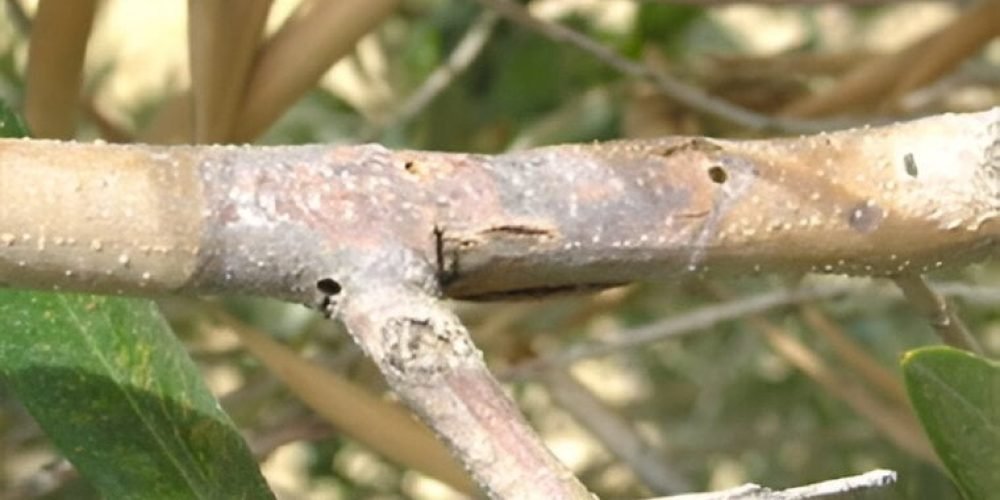Table of contents of the article
ToggleOlive Neon is an insect that infects olive leaves, causing tree weakness and decreased productivity. This article from the “WORLD OF PLANTS” website discusses effective prevention and control methods.
Symptoms of Neron olive disease
- Scientific name : phloeotribus scarabaeoides
- the family : coleoptera
The adult insect digs shallow tunnels in the axils of buds, branches, or leaves, where it spends the winter. There are cotton balls in the sheaths of the branches, covering the entire insect - with white masses on the branches.
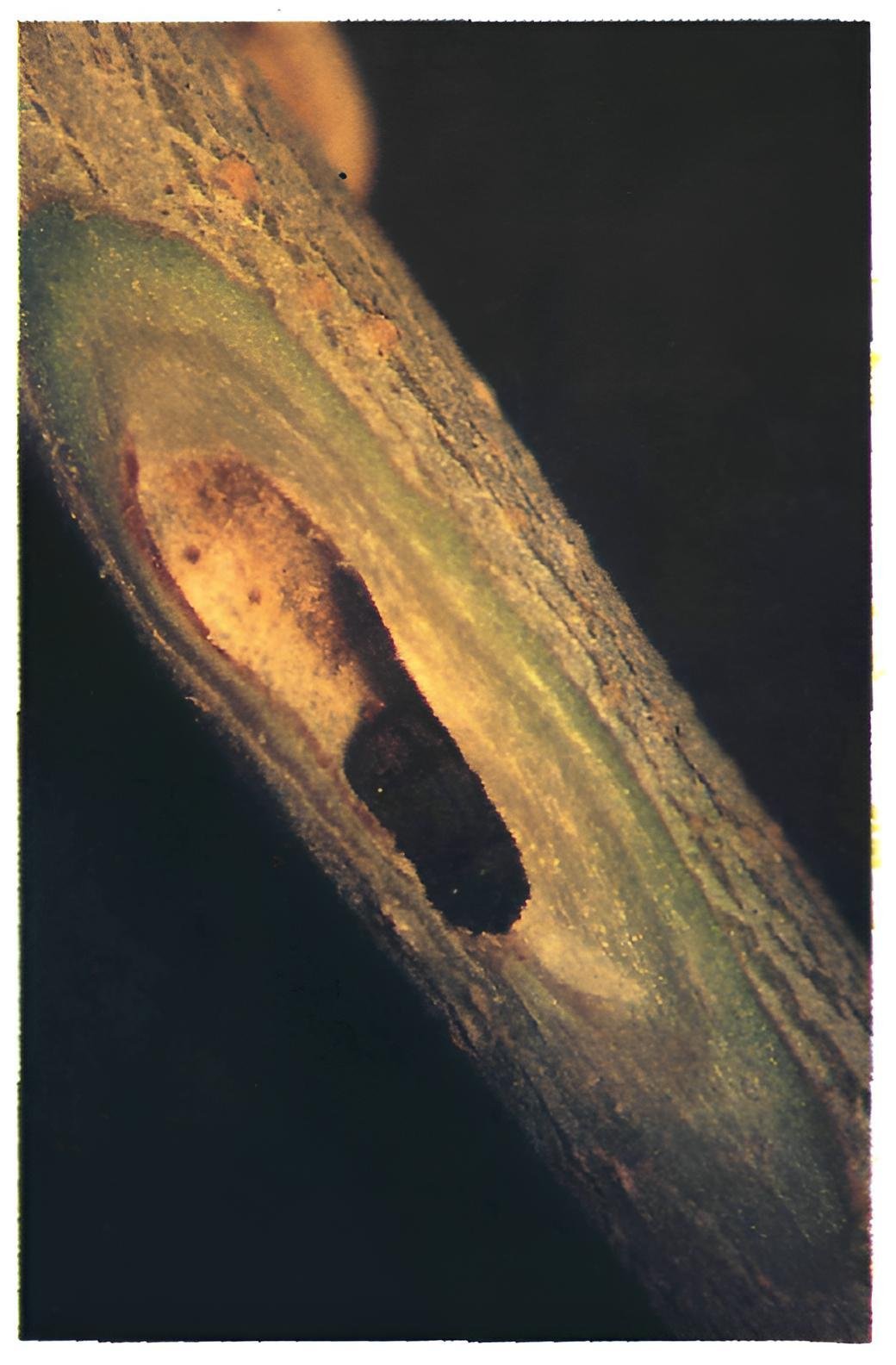
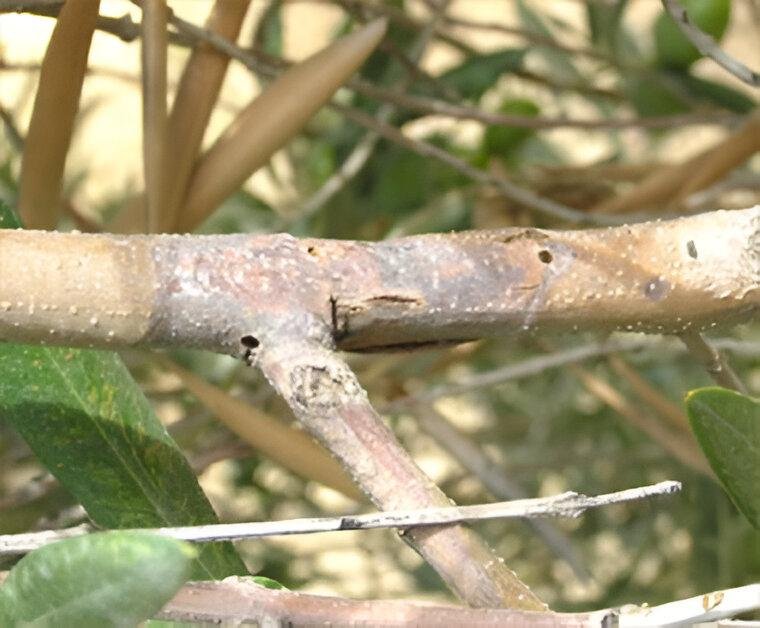
Nero's description of Olive
- The adult shape resembles a small oval weevil, about 2 mm long, dark in color and with two dark spots. The antennae are characterized by a papery elbow shape. The body is covered with very thick hair.
- The egg is ivory in colour, oval in shape, measuring 0.8 mm x 0.5 mm.
- The larvae are basal and arched, yellowish-white in colour. It passes through 5 larval stages and reaches 3.5 mm in size when fully developed.
- The cocoon, whose stage is preceded by a pre-spring period of inactivity, is white, then gradually turns yellowish-brown.
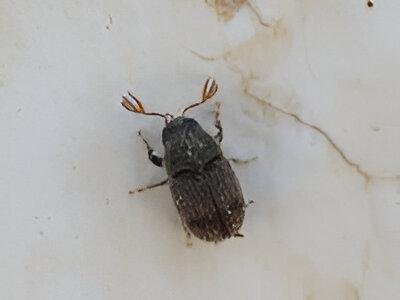
Causes of olive nero
Usually, farmers keep logs in the woodshed to sell as firewood. Thus, this pest has a special life cycle, as it spreads in late spring from the woodshed towards the olive trees. This insect mainly attacks trees near the infestation focus.
Suitable conditions for the spread of Olive Neon
The incidence of this pest increases when temperatures rise and drought occurs, which weakens trees. Therefore, it is found in dry areas
The cycle of development of the olive tree
It hibernates in plant tunnels but sometimes it can also overwinter as a larva… In the spring, the adults emerge and begin to burrow at the axils of the branches.
The adults are then carried onto dead branches and/or pruning residues to reproduce; Females dig a hole in the bark, enter between the bark and the sapwood and dig two transverse tunnels in which they lay eggs.
Newly hatched larvae emerge and each digs a tunnel perpendicular to the mother's tunnel. After about a month and a half, the larvae reaches maturity, and at the end of its exhibition it becomes wild.
The flashing period of adults penetrating the bark is between May and June.
The first generation is generally followed by two more with the adults flashing in August and then in the fall; The latter is heading into winter.
In general, the insect has 3 generations per year but in favorable weather conditions it can reach 4
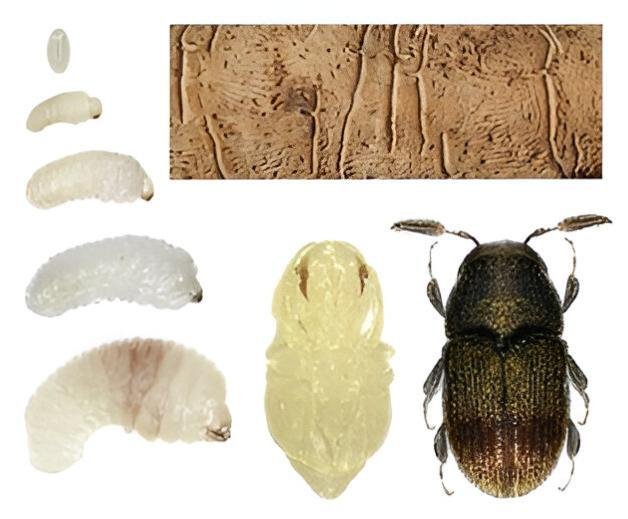
Losses of disease spread
They can cause losses of up to 75% of potential crop yield, especially when insect attack levels are high). This pest directly affects crop productivity through openings at the top of young branches, which subsequently die.
Olive groves may become completely unproductive within 5 years of this infestation. The survival of trees in small orchards may be compromised, and the quality of olive oil may be affected
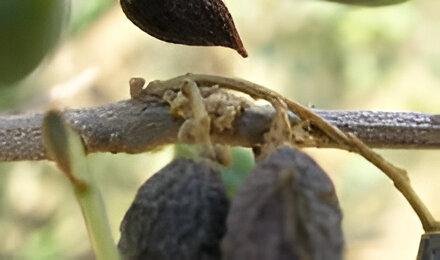
Anti-Nero olive strategy
Preventive measures to prevent the occurrence of the disease
- Proper fertilization, pruning, and removing or burning infected branches.
- Monitoring larvae, including:
- Newly hatched larvae observed in terminal growths that are less than a year old.
- Older caterpillars (first migration) are found on branches at the age of 1-3 years starting in late October.
- Older larvae (second migration) are found on skeletal branches and stems and are observed in the months of March, April and later.
- Tear the ground around the crown of the tree and collect the dirt around it starting in March to prevent the emergence of adult insects in the future
Chemical and organic control recommendations
- Burning or burying olive trunks or early pruning. In the latter case, eggs cannot be laid by the insect because the wood is too dry.
- The pesticides permitted under the regulations governing integrated olive production are formothion and dimethoate, which are two organophosphorus insecticides…. Other chemicals that have recently been reported to be effective in controlling olive bark beetle populations are pyrethroid insecticides.
- Ethylene, a plant hormone, has been reported to attract the olive bark beetle…. The use of ethylene-releasing diffusers has increased the number of scaraboids approaching treated olive trees and is therefore preferred for use in a lure and trap control system.
In conclusion, we would like to note that we, at the world of plants website, offer you all the necessary services in the world of plants, we provide all farmers and those interested in plants with three main services::-
- Artificial intelligence consulting service to help you identify diseases that affect plants and how to deal with them.
- Blog about plants, plant diseases and care of various crops ... You are currently browsing one of her articles right now.
- An application that provides agricultural consultations to clients, as well as a service for imaging diseases and knowing their treatment for free – Click to download the Android version from Google Play Store، Click to download the IOS version from the Apple App Store.
References
- , E., Peña, A., Raya, A. J. S., & Campos, M. (2003). Evaluation of the effect on arthropod populations by using deltamethrin to control Phloeotribus scarabaeoides Bern. (Coleoptera: Scolytidae) in olive orchards. Chemosphere, 52(1), 127-134.
- , Estefanía, et al. Effect of the combined treatment of insecticides and an attractant for the control of Phloeotribus scarabaeoides, a pest of Olea europea. Pest Management Science: formerly Pesticide Science, 2003, 59.3: 339-346.
- Russo G., 1976. Agrarian Entomology. Special Part. Liguori Editore, Naples.
- Tremblay E., 1997. Applied entomology. Liguori Editore, Naples
- Phloeotribus scarabaeoides – antropocene
- Effect of the combined treatment of insecticides and an attractant for the control of Phloeotribus scarabaeoides, a pest of Olea europea – pdf file




